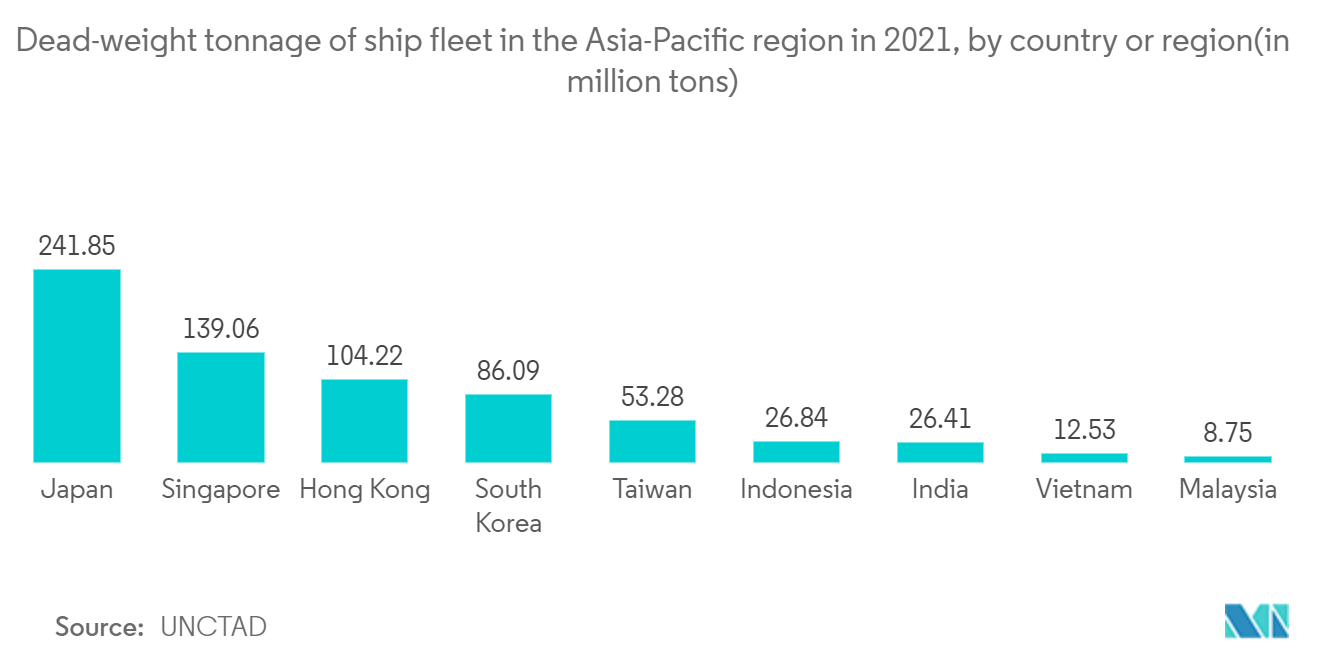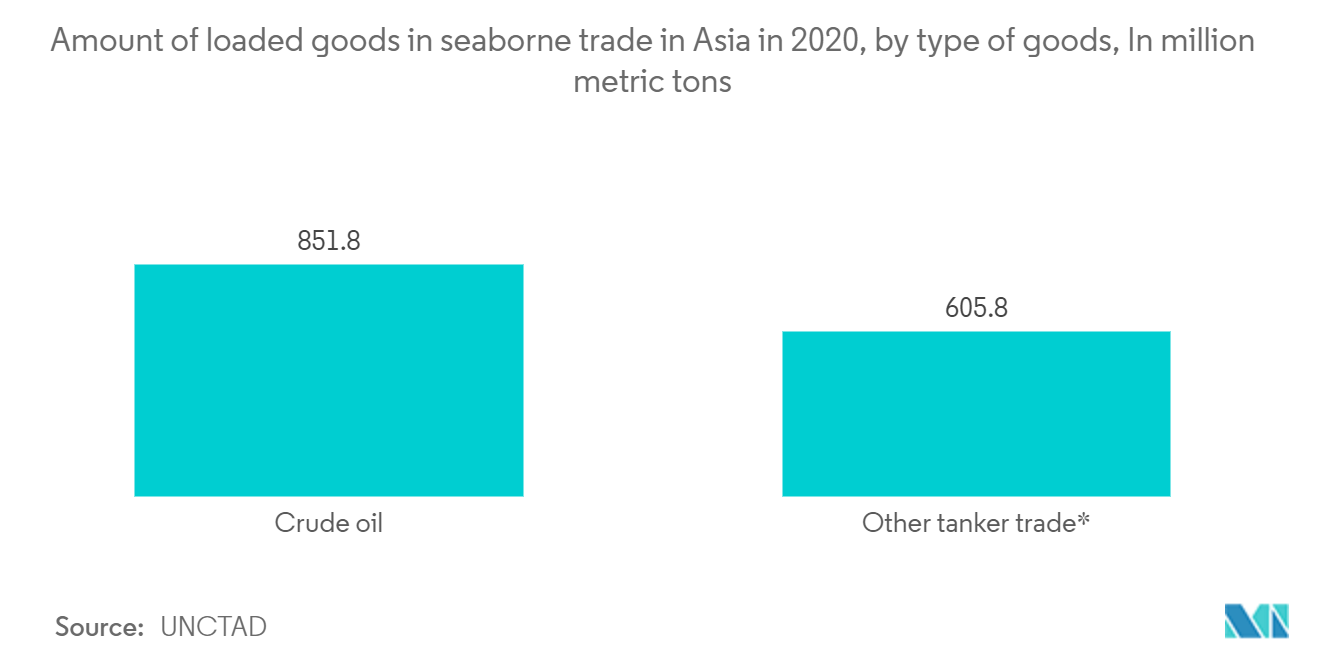Market Trends of Asia-Pacific Stevedoring and Marine Cargo Handling Industry
This section covers the major market trends shaping the APAC Stevedoring & Marine Cargo Handling Market according to our research experts:
Rising Container Handling Services are driving the market
Asia Pacific exports are expected to grow at a rapid pace, helped by the sustained strong growth of intra-regional trade within Asia Pacific, as China, India, and ASEAN continue to be among the world's fastest-growing emerging markets. Over 31 million twenty-foot equivalent units (TEU) of cargo are expected to be transported across the Pacific Ocean in 2021, making Trans-Pacific routes the largest shipping zone in terms of load size. As a result of growing globalization, the volume of seaborne trade reached some 11 billion metric tons in 2020.
In 2021, China's fleet ownership amounted to approximately 244.56 million dead-weight tons. Comparatively, Malaysia's fleet ownership amounted to approximately 8.75 million dead-weight tons. China and Japan placed among the top three ship owners in the world alongside Greece, with China owning a total of 7,318 vessels and Japan owning a total of 4,029 vessels as of November 20, 2021.

Increasing Maritime Trade in the region
In 2020, Asia accounted for most of the global maritime trade. Ports in Asia were responsible for loading almost 42 percent and unloading roughly 67 percent of all goods transported by sea worldwide. Some of the biggest ports in the world are located in Asia, mainly in China. In 2020, the amount of loaded dry cargo in seaborne trade in Asia amounted to about 2.75 billion tons. In that year, a total of 4.21 billion tons of goods were loaded in seaborne trade in Asia.
Asia's predominance in global maritime trade strengthened in 2020, as it maintained a 41% share of total goods loaded, increased its volume of goods discharged and remained the largest seafarer supply region in the world. The pandemic drove dramatic variations in Asian trade between 2019 and 2020, particularly on the Transpacific route. Reflecting the initial shock caused by the pandemic, container volumes from Asia to North America dropped by 13% between the fourth quarter of 2019 and the first quarter of 2020 but jumped by 36% in the third quarter of 2020, reflecting a surge in cargo flows to meet consumer demand.
Reflecting these large swings in trade flows, 2020 saw an increase of 2.8% on the route. By comparison, trade on the Asia-Europe route declined by 2.6% in 2020. Reflecting the resilience of the region's containerized trade and swift rebound in exports, Asia's container port throughput declined by a marginal 0.4% in 2020. The liner shipping connectivity of the continent also outperformed other regions, with the top five most-connected economies in the second quarter of 2021 being in Asia - China, Hong Kong (Special Administrative Region, China), Malaysia, Republic of Korea and Singapore.


